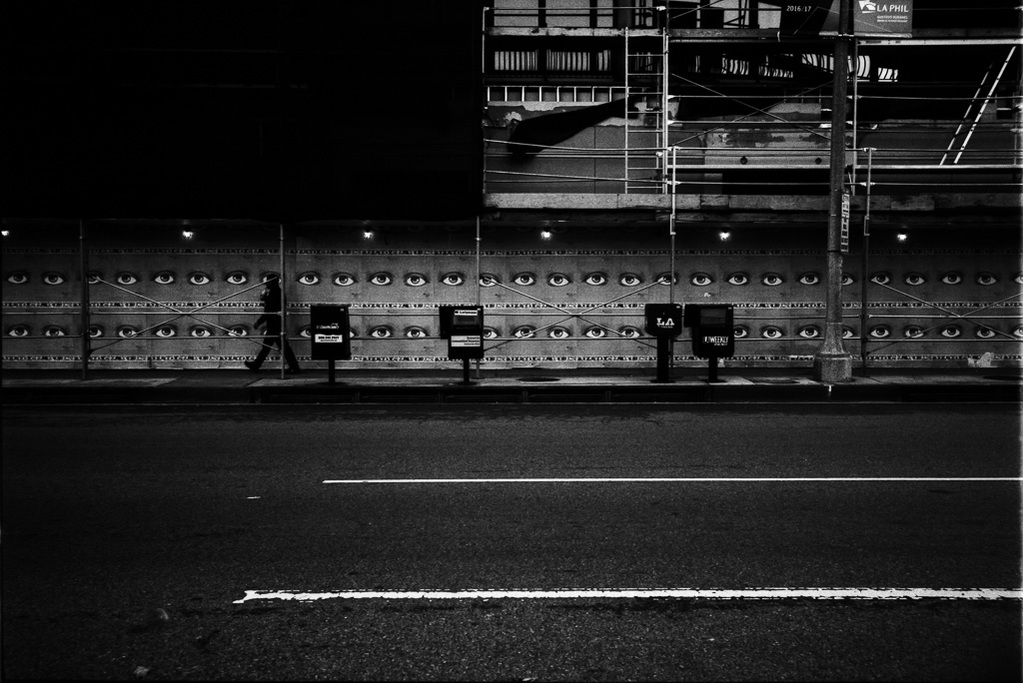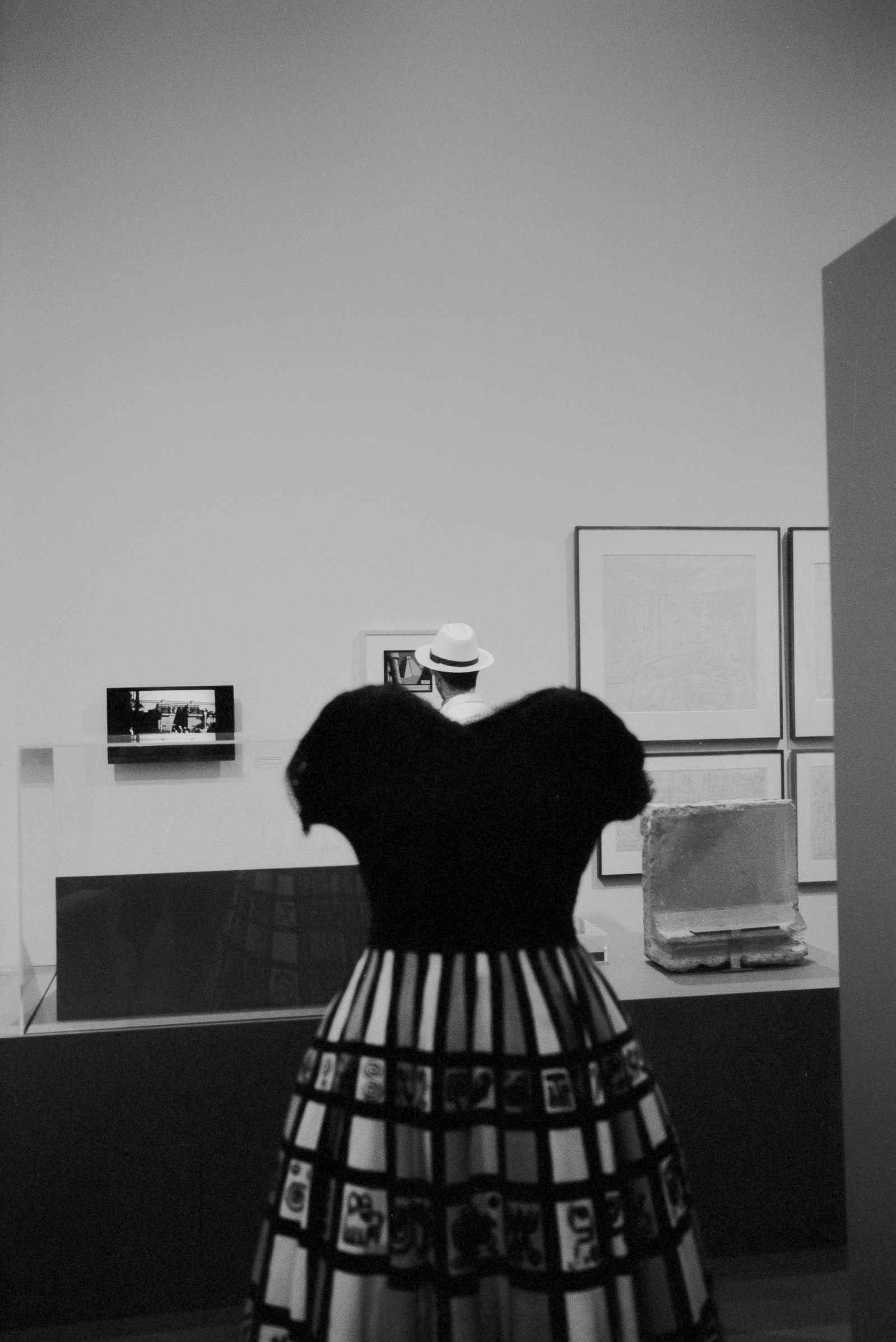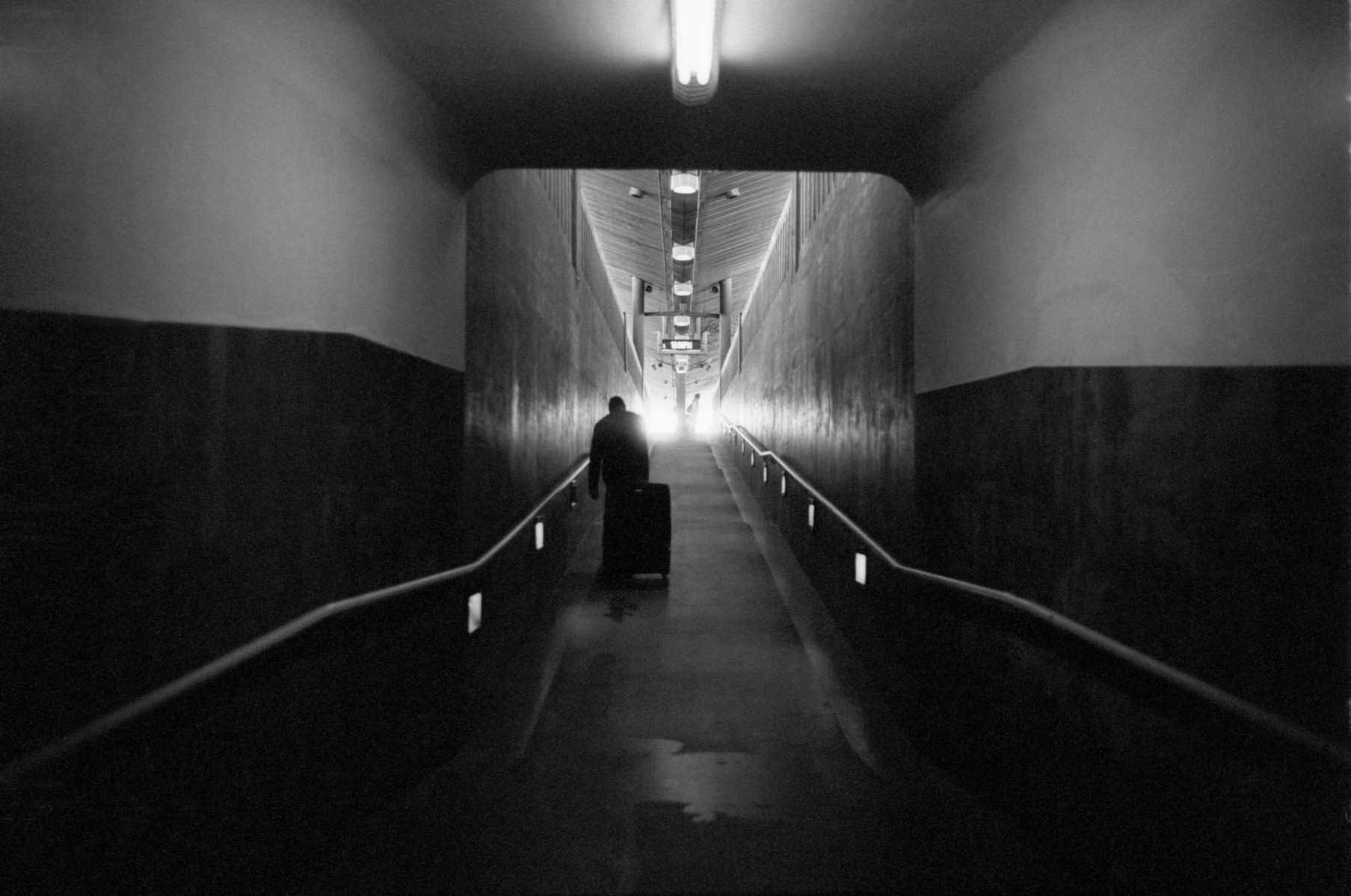After I wrote my post last night I was feeling a bit antsy and we didn’t have any wine at home so I started reading other people’s blogs. The simple practice of reading other peoples musings can often wind me down and depending on the writer even put me to sleep. I stubbled across a piece on Jeff’s blog regarding a street photographer who had decided he was leaving street photography which had the decidedly opposite effect. I read through it all and then scribbled a horribly long diatribe detailing what is wrong not only with this photographer’s reasoning but with street photography in general. I wrapped it all up with how people should structure their own goals in photography. It was straight-up Thunderdome–a to-the-death cage-match between me and street. I thought the I might post it here tonight..
Someone made the point that street is a-la-mode. I think that’s part of the truth. I think the broader issue is more complex and multi-faceted. First of, street requires no skill other than taking a picture of someone on the street with or without their knowing or permission. Most of what I see being called street is crap. No thoughts to composition, or subject, or statement, or quality what-so-ever. I know this because I shoot pictures of the backs of people heads all the time and most of them are crap and it has nothing to do with whether or not they are street photos or not.
The lack of creativity in so much of what is called street is only surpassed by the rampant amount of blatant plagiarism in street. Yes, there is nothing that is new and that includes photography–it has all been done before. Yes, I am guilty of bending/borrowing another photographer’s style. I look at the previous two statements as important aspects of establishing one’s own shooting style and I embrace it, but that’s not the photographic journey most street photographers are embarking on. They are specifically limiting themselves to a particular genre because they believe there is a dogma attached to street that *doesn’t require* them to develop any style or photographic capability other than haphazardly shooting a picture of a person on a street or their silhouette against a colorful background. It’s like the Danish Dogma « films » of the late 90s. Quite easy to be a street photographer if you go in thinking all you have to do is be brave and approach people with or without their permission and completely diminish the act of creating an image to just pushing a button.
Lastly, certain tech has infiltrated street photography with a stronghold and attracted a crowd of people that are into the image of that particular tech. The most notable is Leica and the second most notable is film–both of which I shoot. Most self-proclaimed street shooters buy a Leica because they’ll automatically be in the high-end of the street club, able to look down their noses at everyone else. They’ve read somewhere about HCB or Winorand or Gilden or Meyerwitz or whoever at Magnum and think that the secret sauce to shooting street is one of these über cameras. And the film crowd is arguably just as bad at times. The number of conversations I’ve had which start with:
« Well I shoot (insert Leica or film here) so I mostly shoot street. »
…are to many to count and they always end with the person I’m talking to saying how people who don’t shooting with (insert Leica or film here) don’t really understand the true essence of the street. Fucking kill me right now.
Ultimately I shoot a style of photography that I identify as street because the photographers who I build my personal style upon all identified with this genre that we today call street. If the makes me a documentarian I’m fine with that. The label doesn’t define the work, it just makes it easier for people to put in a little box because that’s hat human beings do. We like to classify shit.
Am I a committed photographer? As much as I can be and probably more than I should be at times. I’m not as lucky as other’s to have stumbled in to stills early enough to attempt a career. Does that make me or anyone else in a similar situation less capable or committed to developing as an artist (Yes John I said it)? I don’t think so. I spend countless hours mulling over books of other peoples work. I spend more money than I should processing and shooting film because it’s organically developed (no pun intended) into an important part of my process as well as the aesthetic I have come to prefer. I shoot as often as I can, I practice my focusing at work. I print books, write my silly blog. I even post on Instagram where I follow the works of photographers far more talented than I’ll ever be… gasp.
Now I’ve soapboxed to long but the last thing I want to say is that I do believe the critical mistake that people make when it comes to all forms of photography is to think there is a point here you as an artist have reached a point where you no longer need to continue developing. By developing I mean stylistically, or the process, or the tools, or the genre or any aspect of the craft. Continuing to learn and try and fail is what makes any pursuit infinitely personal, non-curruptable and ultimately enjoyable. Surrendering yourself to being malleable means no one else defines what you do but you. No one can tell you when you have failed. Setting abstract goals like being « the best » or having 100K followers will mean nothing but a feeling failure whereas deciding you want to try to shoot a different lens or a different technique mean success every time.
God I sound like a self help video…
Thunderdome was shot on my LeicaM7 using a 35mm Summicron on Kodak Trix400 pushed +1 at the Icon
I appreciate that it takes time to get film processed. I need that time, I’ve realized. In fact I think I actually need more time than just a week or two to feel comfortable. Don’t get me wrong, it would be nice to be able to see the images I make right after I make them but I’ve come to understand that I need that time to become detached from the images I make. I need that time to become objective about the edits that I make because after some time, there are images that I thought were amazing that are actually crap and honestly vice-versa.
Sometimes there are images which I just can’t place–where the elements all seem aligned, but something’s still not right. Those images don’t get rejected, they just sit there and wait for me to call upon them later when I’m in a similar head space to when I made the image in the first place.
That shit can take some time. I’m constantly inspired by the images made by the artists I follow and by the visual stimulus we are all taking in at a million-bytes-per-second. Either of these sources of inspiration have enough gravitational pull to shift my visual compass but both acting simultaneously is like Chuck Norris fighting Mr. T.
Which brings me to this image. Last night AM and I went to the movies. It turns out we’ve been together for 19 years, love you baby. After fifteen minutes my mind had melted–the film was so beautiful and horrible and amazing and depressing all at the same time. My ears were ringing from the sheer volume of the sound design and there were the moments where the low frequency was so low it felt like the air was being sucked out of the room. But what really got me was the superbly considered and rendered duality to the visuals. Duality was one of the main themes so it was fully represented in every aspect of the film, but that dance of opposing visual dichotomies spun my compass right round baby right round and I walked out of the theatre damn near in heat.
This morning an artist whom I haven’t spoken to in a while told me he missed something in my work. There was an edge in some of my earlier images that he thought I had rounded-off a little to much. It’s not like my work has ever been super edgy, but I think I know what he meant. It’s like I’ve gone from “PG-13” to “G”… a strong “G” or maybe a “PG-.” It caught me a little off-gaurd but at the same time not. But that comment together with the experience from last night’s film swayed me. As I looked though my images tonight, everything felt a bit Mickey Mouse and I found myself being drawn to grittier contrasts and harder geometric compositions.
When I saw this image again it was a lighting bolt. It feels perfect right now–my version of some stupid meme of an old, mangy dog that’s done a face-plant while crawling off a brown, faux-leather couch in the corner of someone’s mobile-home with the words “current mood” scribbled underneath it.
Shot on my Leica M7, 35mm Cron on JCH Street Pan 400 pushed to 800 at the Icon.
street
dtla
photography
analog
JCH
Streetpan
400
I’ve been trying to see things differently. I’m trying to really look at what’s happening around me and to not see what I’m expecting to see. I feel like I’m missing things, important things that are worthy of finding and exploring are happening and it’s not for want of curiosity, my eyes just aren’t open the way that they need to be. They used to be though.
My daughters can see things like I used to. In fact they see them everywhere–tiny details, incredible juxtaposition and visual irony that’s just plain ridiculous. They’re always taking pictures with their phones or pointing things out to me. Little scenes that they create narratives for, complete with characters and voices and subplots sometimes and all I can think is that it’s all so damn clever.
My brother David still has that gift as well. I posted this picture above a while back on Instagram and his comment was,
“Robot lady legs,”
…which is now the title of the picture because it’s brilliant. Completely fucking brilliant. The arch becomes a pair of legs, but who’s legs are they? Well, the light looks like pubic hair in a landing strip, so the legs belong to a lady. But this is a very boxy pair of legs so she must be a robot. Et voila. His mind just sees things that the rest of us somehow forgot how to see and the fact that he still can gives me hope that if I try really hard to open my eyes again, I might be able to see again like they do.
It’s not easy. The first step for me is clearing my head. Not thinking about what I need to find. Not thinking about what time it is or what I need to do later, but being completely in the here and now. The next step for me is limiting my vision. I usually do this by front focusing my lens. Now I have narrowed my view to happenings closer than two-and-a-half meters from me–everything further away simply must fade into nothing–beyond my focus range can’t exist. The last step is to ignore the patterns I know and to see beyond the immediate state of recognition. Our mind store memories based on hierarchical systems of patterns. Part of a black line, becomes part of a letter, becomes the letter “A” becomes part of a word, part of a word that has three letters, that looks like the word “ass” because I’m looking at the word “ass.” I try to subconsciously hijack that process and see what I could be looking at. This is the hardest part, just letting my mind flow.
I’ve had some success. I’ve had a lot of failure, but like all things it’s a work in progress. I was using this technique when I shot the picture at the top of this post. It’s not a picture I would normally see or shoot. It lacks the strict compositional bullshit dogma I’ve built around myself and is the polar opposite to the “Bag man” picture I wrote about yesterday. It was straight from the subconscious, made possible with a little bit of head shrinking.
Shot on a Leica M7, with an amber filtered 35mm Cron on Kodak Tri-X 400 pushed to 800 at the Icon.
Leica
perception
film
analog
fineart
lacma
kodak
icon
street
photography



